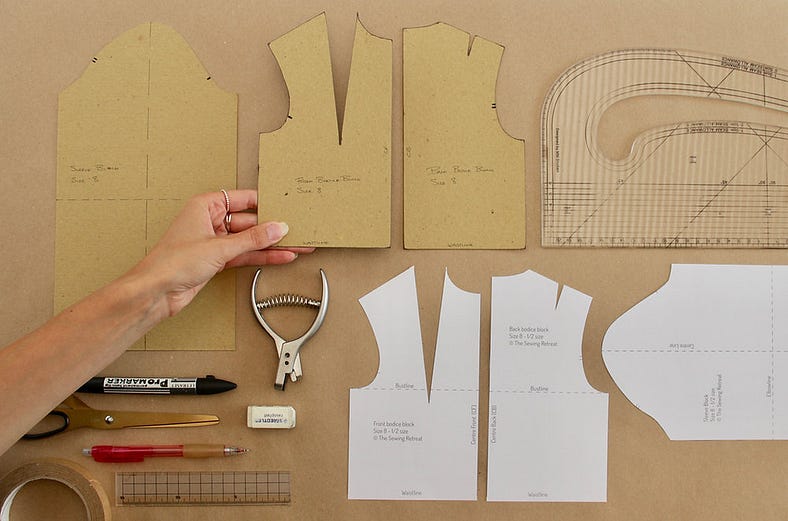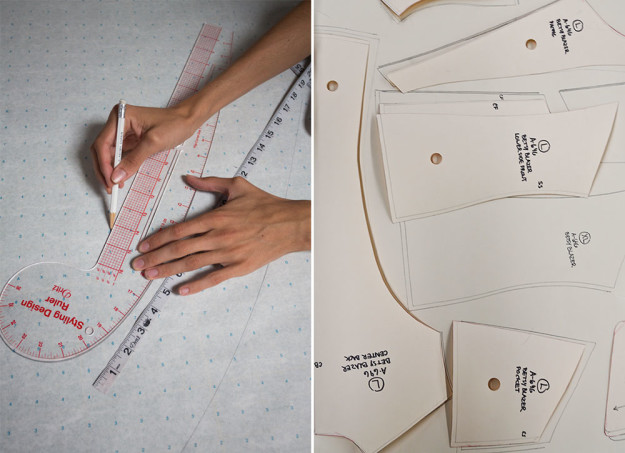Fashion design is an ever-evolving art form that constantly seeks to push the boundaries of creativity, innovation, and expression. Behind the dazzling runways and glamorous fashion shows lies a critical aspect that forms the foundation of every garment — the art of pattern making. Pattern-making is the process of creating templates that guide the construction of garments, translating the designer’s vision into tangible forms. This crucial step ensures precision, fit and functionality, playing an integral role in bringing fashion designs to life.
Significance of Pattern Making: The Backbone of Fashion Design
Pattern-making is the backbone of fashion design, the architectural blueprint upon which all garments are built. It involves the meticulous translation of a designer’s vision from sketches and concepts into three-dimensional templates, representing each piece of the garment. Accurate pattern-making is vital to ensure the garment’s fit, drape, and movement, as well as its overall aesthetic appeal.
The process begins with pattern drafters or designers creating a flat pattern — a two-dimensional representation of the garment on paper or a computer. These patterns are then manipulated and transformed into three-dimensional shapes using various methods, allowing designers to visualize how the fabric will interact with the human body. Each pattern must be meticulously crafted to suit different body shapes and sizes, considering factors such as ease, fabric properties and style preferences.
Techniques in Pattern Making: Precision and Expertise
Pattern-making demands a combination of technical expertise, artistic flair, and attention to detail. There are two primary approaches to pattern making: draping and flat pattern making.
- Draping: Draping involves manipulating fabric directly on a dress form or a live model to create the desired shape. This hands-on approach allows designers to visualize how the fabric behaves and how it interacts with the body. Draping is particularly useful for achieving fluid and sculptural designs. Once the desired shape is achieved, the draped fabric is carefully marked and transferred onto paper to create the final pattern.
- Flat Pattern Making: Flat pattern making is the more traditional method, where designers create patterns on paper using measurements, calculations, and geometric shapes. This method provides a more structured and precise approach to pattern-making, allowing for easier replication and mass production. Flat pattern making is especially valuable for tailored garments and those with intricate detailing.
Impact on the Fashion Industry: Innovation and Sustainability
Pattern-making influences not only the design process but also the entire fashion industry. The precise and efficient creation of patterns contributes to faster production cycles, enabling designers to respond swiftly to ever-changing fashion trends. Additionally, pattern-making techniques have been revolutionized by advancements in technology. Computer-aided design (CAD) software has significantly streamlined the pattern-making process, allowing designers to create, modify and visualize patterns digitally. This integration of technology has reduced waste, improved accuracy, and enhanced overall design efficiency.
Furthermore, pattern-making is instrumental in promoting sustainability in the fashion industry. By optimizing fabric usage and minimizing waste, pattern makers play a crucial role in reducing the environmental impact of fashion production. Innovative pattern-making techniques, such as zero-waste pattern cutting, aim to utilize fabric with minimal to no wastage, pushing the industry towards more sustainable practices.
Challenges in Pattern Making: Achieving Perfection
Despite its significance, pattern-making comes with its share of challenges. Achieving the perfect fit for a garment is often the most demanding aspect of pattern making. Human bodies vary in shape and size, and patterns must be adapted accordingly to suit different body types. Designers and pattern makers must meticulously tweak patterns, conduct multiple fittings, and engage in iterative adjustments to ensure the best possible fit for their designs.
Additionally, pattern-making requires constant innovation to keep up with changing trends and consumer demands. As fashion evolves, pattern makers must remain agile and receptive to new ideas while maintaining the timeless elements of their craft.

The Artistry and Science of Pattern Making
Pattern-making is an art form that embodies the seamless marriage of creativity and technicality in fashion design. It serves as the foundational pillar on which garments are crafted, ensuring that the designer’s vision comes to life with precision and grace. The fusion of traditional techniques with modern advancements has not only accelerated the design process but has also led to more sustainable practices within the industry.
As we look to the future of fashion design, pattern-making will undoubtedly continue to play a pivotal role in shaping trends and pushing the boundaries of creativity. The dedication and skill of pattern makers ensure that the artistry of fashion design remains ever-present, transforming fabrics into exquisite pieces that adorn the human form. So, the next time you admire a beautifully tailored garment, take a moment to appreciate the meticulous work of the pattern maker, the unsung hero behind every fashion masterpiece.
For more blogs related to design: https://www.dotsod.in/blog/
Follow DOT School of Design on Facebook, Instagram, LinkedIn, Medium and YouTube

